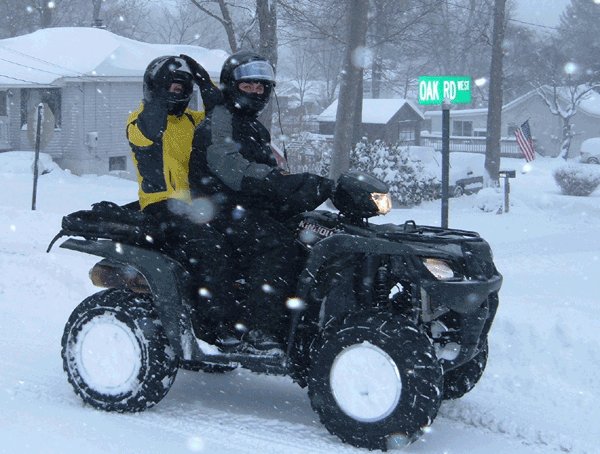By
oxidized_black
View File
1988-2002 Kawasaki Bayou 220 service manual
Also available on eManualOnline
1988-2002 Kawasaki Bayou 220 service manual
The Kawasaki Bayou 220 is one of the most common all-terrain vehicles on off-road trails that is geared toward novice riders and families. It’s also one of the smallest and most inexpensive ATVs on the market, with a retail price under $3,500, as of 2010. The Bayou 220 is Kawasaki’s only ATV of its size. The 220’s sibling is the larger Bayou 250 equipped with a 228cc engine.
Engine
The Bayou 220’s engine is a 215cc, four-stroke, shaft-driven, air-cooled model. Its bore measures 2.6 inches and the stroke is 2.4 inches. It features a relatively high 9.3:1 compression ratio with fuel delivered through a Mikuni VM24SS carburetor. The electronic ignition is Kawasaki’s DC-CDI. It also features a recoil backup as a starting system. The clutch is an automatic wet multidisc model with power delivered to the wheels via a five-speed transmission, according to ATV Source.
Chassis
The steel frame supports a front suspension with single A-arms and twin shock absorbers, with the rear suspension a Quad-Link system with two shocks. Front wheel travel is 4.5 inches, while the rear wheel travel measures at 4.9 inches. Front and rear brakes are drums.
Size
The front tire size is AT21X8-9 with the rear tires measuring AT22X10-10. The ATV’s wheelbase is 43.9 inches, with an overall length of 68.7 inches. Ground clearance is 6.1 inches with the seat height measuring 28.7 inches. It weighs 403 lbs. and can tow up to 450 lbs. Its fuel tank can carry 2.6 gallons.
Basics
The Kawasaki Bayou 220 is not the fastest ATV on the market, but one reason the Bayou 220 has kept its price low is the lack of amenities. It features a brake light and dual headlamps with high/low beam. There is an auxiliary lighting terminal inside the front cover of the ATV and electrical accessory terminals under the seat. The instrument cluster atop the fuel tank features a fuel gauge, but not much else. There are no speedometer, odometer, hourmeter, tripmeter, high-beam indication or high-temperature light. It does have a reverse/neutral indicator light. The Bayou comes in two colors: hunter green and firecracker red.
Features
The front A-arm, twin shock and rear Quad-Link twin-shock suspension system is not a true fully independent system, but it allows for a comfortable ride over rough terrain without employing a complex and expensive, fully independent suspension system. The ATV features front and rear steel cargo racks. The ATV is rider-friendly with a limited adjustable throttle to help novices practice their riding skills without twisting the throttle too far and losing control of the vehicle.
Submitter
oxidized_black
Submitted
12/14/2016
Category
Kawasaki ATV







Recommended Posts
Join the conversation
You can post now and register later. If you have an account, sign in now to post with your account.
Note: Your post will require moderator approval before it will be visible.